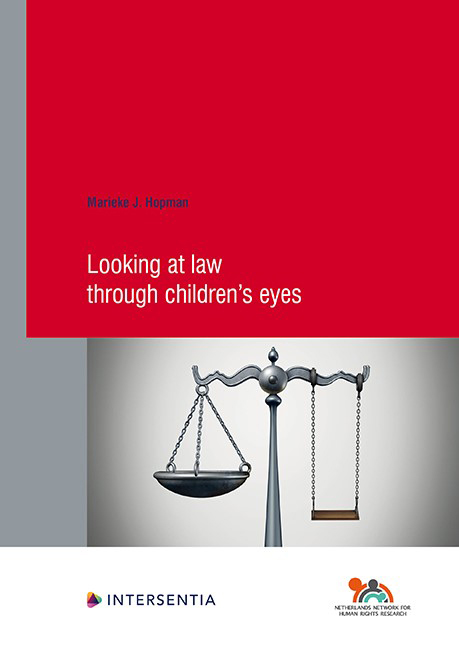Chapter 3 - Law for Children, a Child’s Perspective
Published online by Cambridge University Press: 25 May 2021
Summary
After having defined law (chapter 1) and having analyzed the relationship between children and the law from an adult's perspective (chapter 2), the current chapter will combine both insights to understand what law is for children and, consequently, how we can understand children's rights.
Since law is a social construct, its meaning can only be determined in relation to subjectivity. In the first chapter I answered the question “what is law?” by designing what Weber would call an “ideal type”, a theoretically conceived meaning and the construction of a purely rational, ideal concept. This leads, as Ehrlich would say, to a concept arrived at “by abstraction and deduction”, which creates “a bloodless shape that loses contact with reality”. Now, the intention of the current chapter is to get back to reality, to design a framework of what law actually is to children. Designing a framework of what law is for children will be done by combining the ideal-type definition of law with the daily sociolegal realities of children. This means that we will investigate the legal orders surrounding children, its corresponding sovereigns and its legal rules, insofar as they apply to children. To do this, we have to look through the eyes of children.
The tentative analysis presented in this chapter is still grounded in rational reflection combined with literature study. A more grounded check with empirical social reality will take place when studying the case studies on children's rights by means of qualitative field research, as can be found in chapters 5–7.
DEFINING THE LEGAL ORDER
To find which legal orders apply to children, we have to start by defining the legal order. In chapter 1, a number of characteristics were distinguished which a social order has to possess for it to be a legal order. If for any social order we find that these are met, we can speak of a legal order.
- Type
- Chapter
- Information
- Looking at Law through Children's Eyes , pp. 55 - 86Publisher: IntersentiaPrint publication year: 2021



